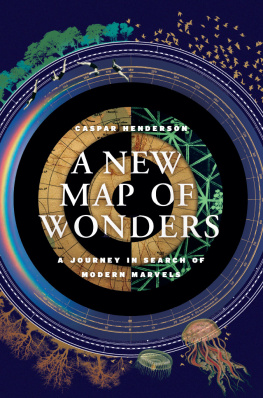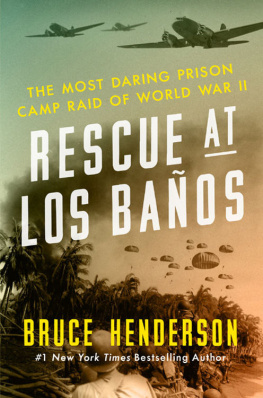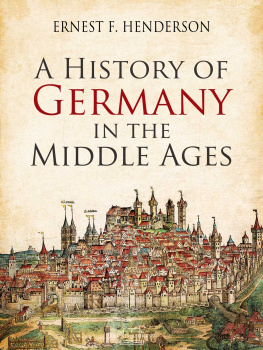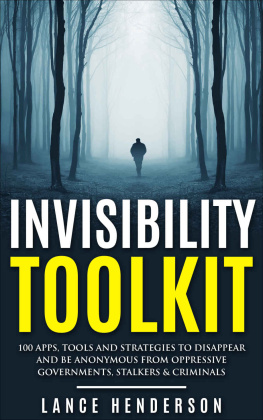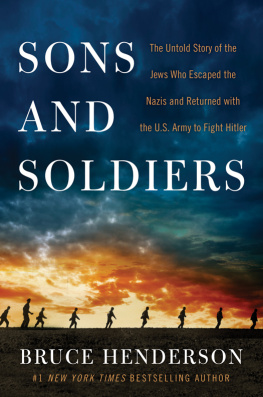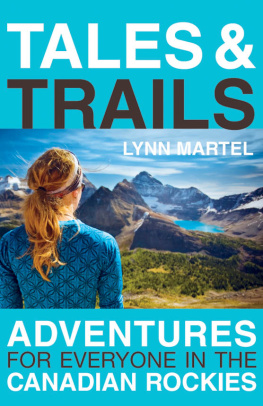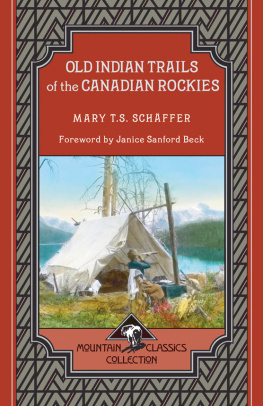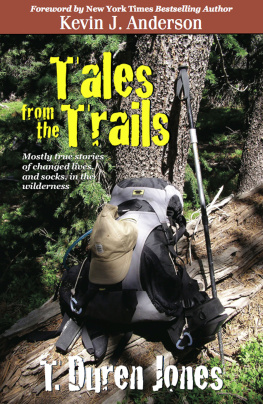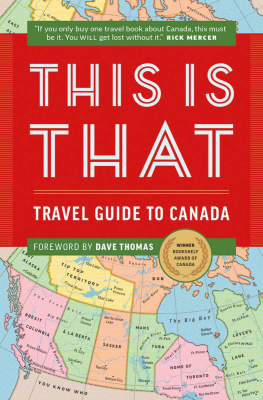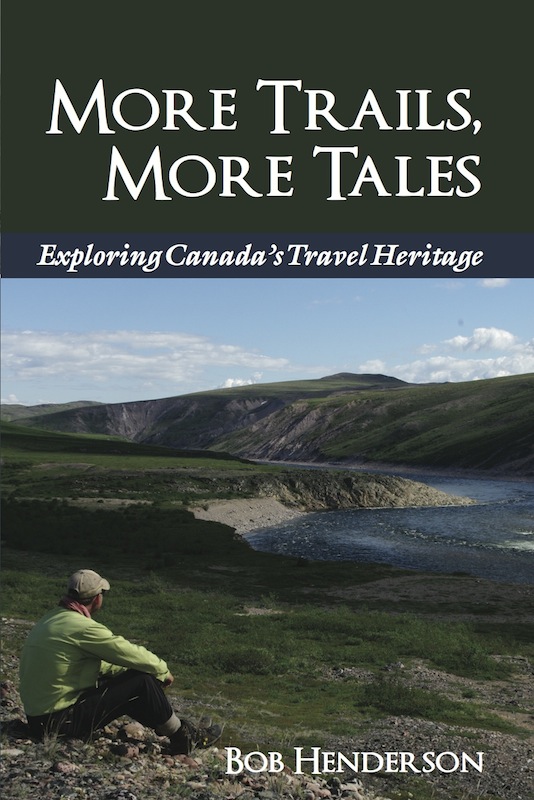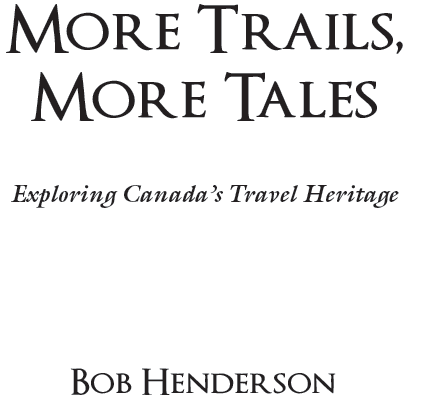Acknowledgements
W riting the acknowledgements spells the end of the trail for a book. I write this aspect last. In so doing, there is a celebratory quality to the moment and a feeling of gratitude to the many people who have had a role, major and minor, in putting the book together.
First there are friends from the trail who have been inspirational and have shared campfire stories. Then there are friends who have provided ideas for the content within. Then there are primary researchers whose work I have pursued with great curiosity in the library and in the field. Finally, there is the publishing crew. These are folks who have encouraged me to write and helped in the process as readers, editors, and computer-savvy people (Im happy to share my learning needs). I need lots of help from this final category of people. Heck, I need and get help from many along the trails of the book writing process on all fronts. Im just a guy who really likes a good story or a useful theory, and who loves to share both. After that, I seek help as a writer for details and for writing cues. It really is a team process.
So lets name them. I likely will not get all those listed who should be acknowledged. As the terrain I cover, geographically and thematically, expands in these pages, so too does the number of helpers along the way. Im happy to be all over the map here. These acknowledgements recognize this fact.
First, there have been many friends who have helped with a suggested reference, a trip route, the openness to share their story or their connections to a story, and the willingness to listen to my versions and contribute ideas. Thanks go out to friends Mandy Heyninck, Al Pace and Lin Ward, Miranda McKeen, Joe Milligan, Ryan Howard, Bruce Hyer, Alice Casselman, Sean Collins, Deb Diebel, Jim Pearson, Tracee Chambers, Cindy McKenna, Bob Ross, Kathy Hooke, William Gastle, Zabe MacEachren, Eleanor Bell, Chris Blythe, Christina Ruddy, and Cameron Deeth.
In the My Studies section of this book, I consider myself a secondary researcher, which means I am delving into the stories of friends who are primary researchers. Their books, articles, and websites have sent me out to explore on the trails. Thanks to Robert Burcher and Grard Leduc as guiding lights in considering historical anomalies. Robert Burcher and Scott Cameron were central to my enthusiasm for the John Muir local trail story in Meaford. Local historian extraordinaire Allan McGillivray has been an inspiration though his commitment to the local stories of Uxbridge, Ontario, and its region. Paul OHara has been most generous in sharing his research into marker trees. Dave Standfield and Svend Ulstrup were instrumental to my knowledge of big canoes. Emily Root has helped me for many years to appreciate the decolonization work involved in rethinking Canadian canoe heritage. Finally, from the My Travels section of More Trails, More Tales , I am grateful for the assistance of Morten Asfeldt, Mike Beedell, and Andr-Franois Bourbeau for input from their vast knowledge of their specialities: Arctic travel, historical re-enactments, and northern wildlife encounters.
The Chrismar Mapping Services team of Mark Smith and Christine Kennedy have produced the informative and attractive maps so important to my travels and studies. What fun it is to work with them.
I had a proofreading party close to my looming deadline. Thanks to my readers, Heather Jordon, Tom Hawks, David Taylor, Liz Calvin, Patti Blair, Christine Kennedy, Mark Smith, and Margot Peck, for their careful individual readings of chapters. Barry Penhale and Jane Gibson have been major supporters of my work and have helped me in all aspects of publishing, from idea sharing, to editing, to promotion. It has been a pleasure to have worked with them now for over a decade. They along with the rest of the Dundurn team, particularly Jennifer McKnight and copy-editor Andrea Waters, have made this a pleasurable experience all along the trail. I am grateful to their attention to detail, a skill I left on a portage trail somewhere long ago.
To Greer Gordon, I owe special thanks. Since 2003, Greer and I have worked as a team. I write with pencil and paper. Greer types and formats and tells me what sucks early on. Hey, she isnt always right, but she always demands I never get too relaxed as a writer. Together from start to finish, I so value the team approach we bring to this book. Thanks, Greer!
Finally, Margot Peck has been my partner supporting me throughout this writing process, as well as a travel partner on a number of the trips and outings within. We have shared the joys of the trail and many friendships. What a special feeling to share life together purposefully and passionately. Most mornings we open the day with promise, surrounded by our cats and with a cup of coffee and conversation. This writing experience never felt like a lonely one. Wait, thats not because of the cats. Thanks, Margot! Love you!
Introduction
Following Blazed Trails
The many become one and are increased by one.
Alfred North Whitehead
I cut a blaze an axe-cut wedge out of a prominent tree to mark a portage trail at a tricky canoe portage takeout. It was 1980. Little did I know then that I would be returning to this same blaze every year from 1982 to 2010. Blazed trees as trail markers have always symbolized for me the proud old ways of the bush: ways tried, tested, and true. Each time I return, eight students and I pause in canoes at the portage takeout to consider where the trail begins. Usually they opt for an open band of rock, a rising boulder field that inspired my decision to cut a new trail in the first place thirty years ago. I point out the blaze on an aging white birch. Now a faint trail heading obliquely up from the lake becomes more evident.
I mentioned the long tradition of cutting blazes to mark and follow trails. The white birch decayed and fell to the ground in 2009. This is how portage routes were traditionally opened up, that is by fire rangers, trappers, and early summer camp groups here, north of Sudbury, and throughout the woodlands of Canada. Likely the first survey crew through this particular route in 1900 followed Native blaze markings.
Reading blazes is a good observational skill to learn. Perhaps youll need to follow the blazes later on the trip, I suggest to the students. The skill already proves useful at this first portage. We unload the canoes for our portage, carrying all our supplies and our canoes. Here, I often muse, students might be thinking, Im a long way from home. I often wonder, Does this adventure of the inner spirit and the outer physical body feel like a strange homecoming? In other words, despite being a new experience for many students, does this feel strangely natural? I also pause to acknowledge the satisfaction I feel in returning to that same blaze and that heritage-laden pedagogical moment year after year. Some things are changing and some things stay the same.
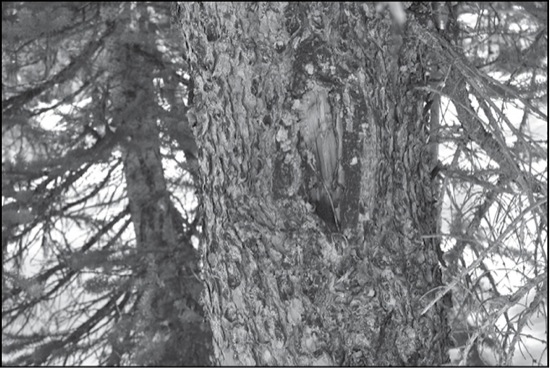
A blazed tree marking a trail in the Skoki Lodge area.
Finding ones way by following blazed trails: I have much enthusiasm for such an experience. Each axe cut is a thing of beauty to me. I feel like an old-timer (and Im not even sixty) when I consider all facets of the art of marking a trail by blazing axe marks on both sides of a prominent tree. Is following a blazed trail a dying skill?


